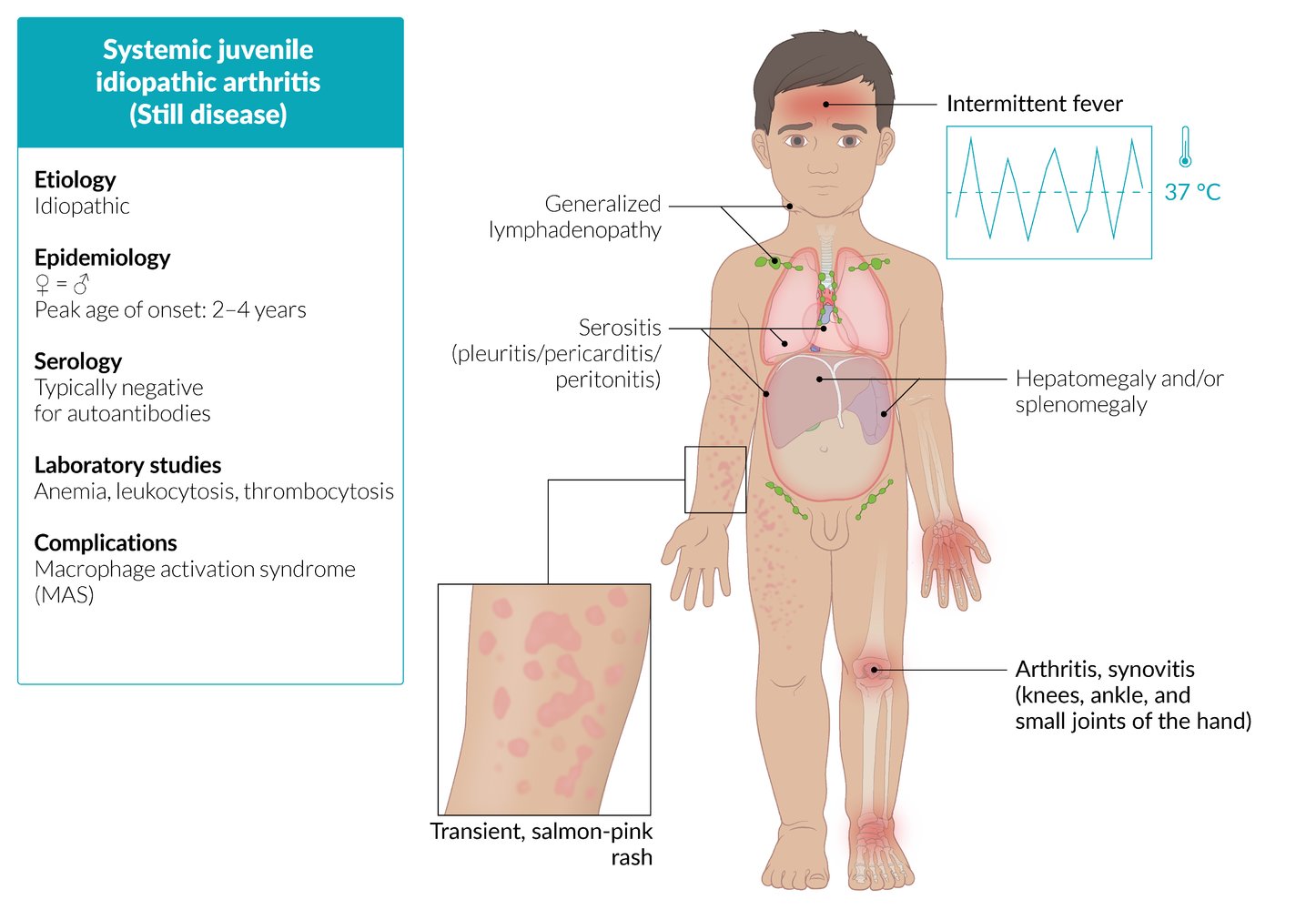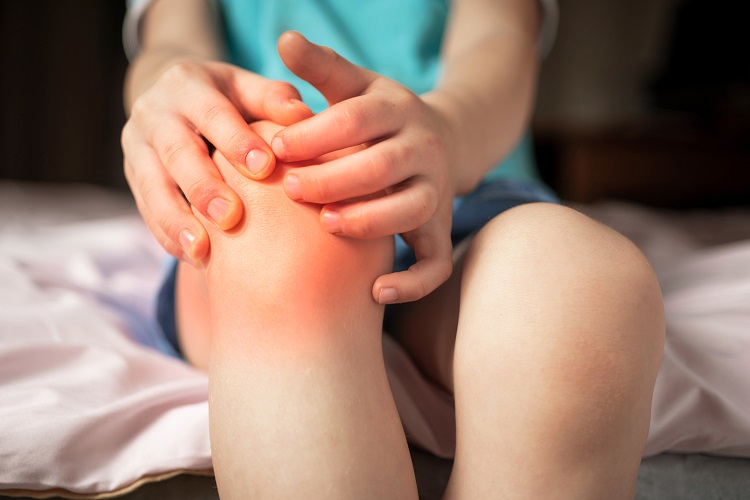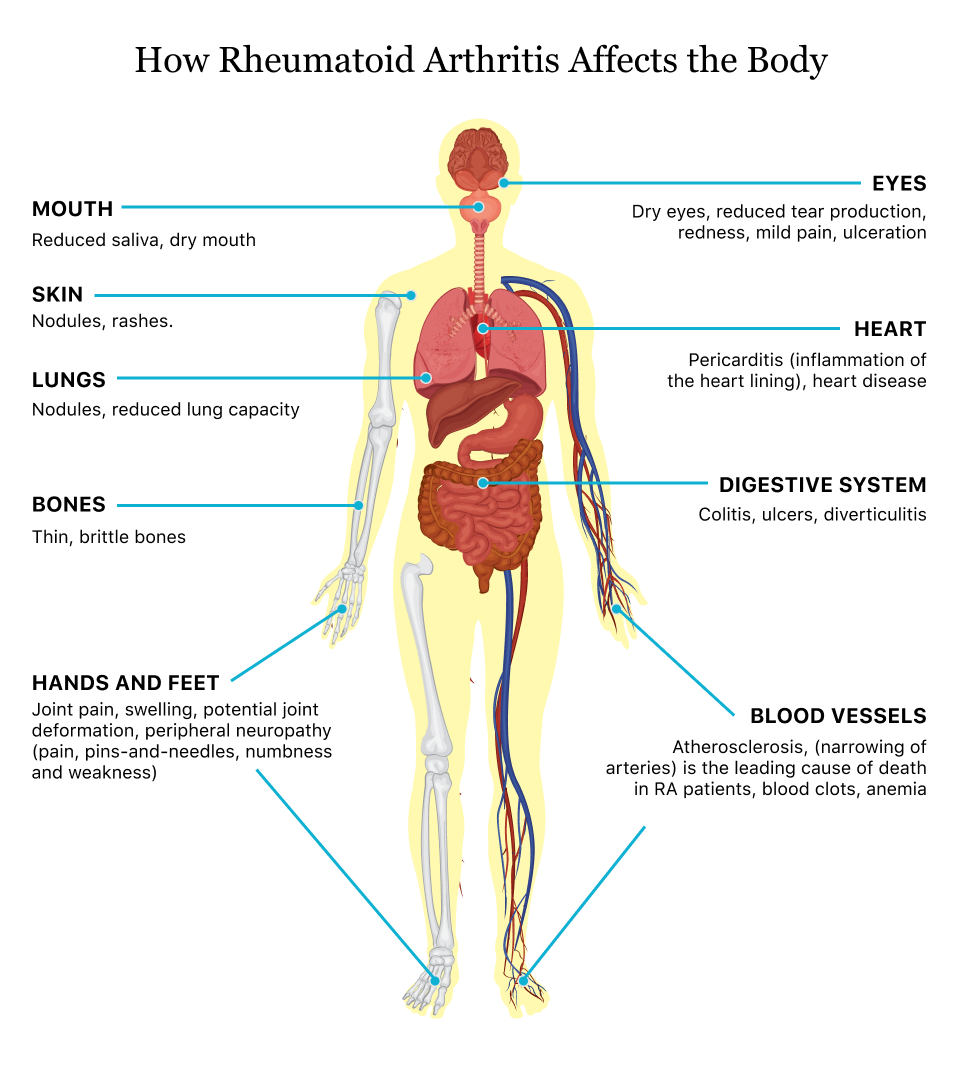Introduction:
Rheumatoid arthritis (RA) is a chronic autoimmune disease that affects the joints, causing inflammation and pain. Although most commonly associated with adults, RA can also develop in children, known as juvenile idiopathic arthritis (JIA). This blog post will discuss what RA is in children, who is at risk of developing it, and potential treatments for the condition.

What is rheumatoid arthritis in children?
Juvenile idiopathic arthritis (JIA) is the most common type of arthritis in children under the age of 16. JIA is classified as an autoimmune disorder, which means the immune system mistakenly attacks healthy tissues in the body, resulting in inflammation in joints. Symptoms of JIA vary from child to child, but often include joint pain, swelling, stiffness, and limited mobility. Other symptoms can also arise, including fever, rash, and eye inflammation.
There are several different types of JIA, each with their own unique set of symptoms and characteristics. Oligoarticular JIA, the most common form of JIA, affects four or fewer joints in the body. Polyarticular JIA affects five or more joints and can be further classified into rheumatoid factor-positive or rheumatoid factor-negative. Systemic JIA causes inflammation throughout the body and can result in high spiking fevers, rash, and damage to organs.
Who is at risk?
The exact cause of JIA is unknown, but researchers believe that a combination of genetic and environmental factors may play a role. Children with a family history of autoimmune diseases, such as RA or lupus, may be at a higher risk of developing JIA. Other factors that may increase the risk of JIA include infections, hormonal changes, and exposure to toxins or pollutants. Girls are also more likely than boys to develop JIA.
Potential treatments for JIA:
JIA cannot be cured, but several treatments are available to manage the symptoms and slow the progression of the disease. The goal of treatment is to reduce joint inflammation, relieve pain, and maintain joint function. Nonsteroidal anti-inflammatory drugs (NSAIDs) are commonly used to alleviate pain and inflammation in JIA. Disease-modifying antirheumatic drugs (DMARDs), such as methotrexate, are used to slow the progression of JIA and prevent joint damage.
Biologic agents, including tumor necrosis factor (TNF) inhibitors, can also be used to treat JIA. These medications work by suppressing the immune system and reducing inflammation in joints. Physical therapy and exercise can also be effective in treating JIA, as they help maintain joint function and range of motion. In severe cases, surgery may be required to correct joint damage or deformities.
Conclusion:
Juvenile idiopathic arthritis is a chronic autoimmune disease that can cause significant pain and mobility issues in children. While there is no cure for JIA, there are several treatment options available to manage symptoms and slow the progression of the disease. Early diagnosis and treatment can greatly improve the long-term outcome for children with JIA, helping them maintain joint function and live active, healthy lives.

Understanding Bone and Joint Inflammation: Causes, Symptoms, and Treatments
Hip replacement: A surgical procedure that involves replacing a damaged hip joint with an artificial one
Promising Research and Developments for Rheumatoid Arthritis Treatments
Rheumatoid Arthritis in Children: Signs, Symptoms, and Treatment
Overcoming Fatigue and Depression Associated with Rheumatoid Arthritis
The Relationship Between Diet and Rheumatoid Arthritis Management
When to Seek Medical Help for Rheumatoid Arthritis
Key Differences Between Rheumatoid Arthritis and Osteoarthritis
Living with Rheumatoid Arthritis: Coping Strategies and Treatment Options
Understanding the Symptoms and Causes of Rheumatoid Arthritis
What is Juvenile Idiopathic Arthritis?
Juvenile Idiopathic Arthritis (JIA) is a type of arthritis that affects children under the age of 16. JIA is an autoimmune disorder in which the immune system mistakenly attacks healthy tissues in the body, causing inflammation in joints. The symptoms of JIA may vary from child to child, but typically include joint pain, swelling, stiffness, and limited mobility. Other symptoms can also occur, such as fever, rash, and eye inflammation. There are several different types of JIA, including Oligoarticular JIA, Polyarticular JIA, and Systemic JIA.
Signs and Symptoms
Joint swelling and stiffness
One of the most common symptoms of JIA is joint swelling and stiffness. This can be particularly noticeable after prolonged periods of inactivity, such as after waking up in the morning. The joints will often feel warm to the touch and may be tender or painful. Depending on the type of JIA, the inflammation can affect multiple joints or just a few.
Decreased mobility and range of motion
Children with JIA may experience a decreased mobility and range of motion due to joint stiffness and inflammation. Activities that were once easy may become difficult or painful. This can make it challenging for children to participate in sports, exercise, and other physical activities. In severe cases, JIA can even result in joint damage or deformities if left untreated.
Risk Factors
The exact cause of JIA is unknown, but researchers believe that various factors may contribute to its development. Children with a family history of autoimmune diseases like RA or lupus may be at a higher risk of developing JIA. Girls are also more likely than boys to develop JIA. Other factors that may increase the risk of developing JIA include infections, hormonal changes, and exposure to toxins or pollutants.
Potential Treatments
While there is currently no cure for JIA, there are several treatment options available to manage symptoms and slow the progression of the disease. Nonsteroidal anti-inflammatory drugs (NSAIDs) are commonly used to alleviate pain and inflammation in JIA. There are also disease-modifying antirheumatic drugs (DMARDs) like methotrexate, which can slow the progression of JIA and prevent joint damage.
Another treatment option for JIA is biologic agents, including tumor necrosis factor (TNF) inhibitors. These medications work by suppressing the immune system and reducing inflammation in joints. Physical therapy and exercise can also help maintain joint function and range of motion. In severe cases, surgery may be required to correct joint damage or deformities.
Conclusion
Unlike adults, children with JIA may not always understand or be able to communicate their pain or discomfort. Early diagnosis and treatment can greatly improve the long-term outcome for children with JIA. With proper medical management, physical therapy, and support, children with JIA can maintain joint function and live active, healthy lives.

Juvenile Idiopathic Arthritis (JIA) is a type of arthritis that affects children under the age of 16. It is an autoimmune disorder in which the immune system mistakenly attacks healthy tissues in the body, causing inflammation in joints. The symptoms of JIA may vary from child to child, but typically include joint pain, swelling, stiffness, and limited mobility. Other symptoms can also occur, such as fever, rash, and eye inflammation. There are several different types of JIA, including Oligoarticular JIA, Polyarticular JIA, and Systemic JIA.
To diagnose JIA, a doctor will perform a physical examination, blood tests, and imaging studies. These diagnostic tools can help determine the type and severity of JIA and make a treatment plan accordingly.
Diagnosis
Physical examination
During the physical examination, the doctor will evaluate the child for signs and symptoms of JIA. They will check the joints for swelling, warmth, tenderness, and limited mobility. The doctor may also evaluate the child's overall growth and development to ensure there are no signs of delays that may indicate a systemic disorder.
Blood tests
The doctor may order blood tests to check for markers of inflammation and to rule out other types of arthritis. These tests may include a complete blood count (CBC), erythrocyte sedimentation rate (ESR), C-reactive protein (CRP), and anti-nuclear antibody (ANA) tests. Elevated levels of these markers may indicate inflammation or autoimmune activity.
Imaging studies
Imaging studies such as X-rays, ultrasounds, and MRI scans can help detect early signs of joint damage and deformities. These studies can also help determine the extent and severity of joint inflammation and guide treatment decisions.
While there is currently no cure for JIA, there are several treatment options available to manage symptoms and slow the progression of the disease. Nonsteroidal anti-inflammatory drugs (NSAIDs) are commonly used to alleviate pain and inflammation in JIA. There are also disease-modifying antirheumatic drugs (DMARDs) like methotrexate, which can slow the progression of JIA and prevent joint damage. Another treatment option for JIA is biologic agents, including tumor necrosis factor (TNF) inhibitors. These medications work by suppressing the immune system and reducing inflammation in joints. Physical therapy and exercise can also help maintain joint function and range of motion. In severe cases, surgery may be required to correct joint damage or deformities.
Unlike adults, children with JIA may not always understand or be able to communicate their pain or discomfort. Early diagnosis and treatment can greatly improve the long-term outcome for children with JIA. With proper medical management, physical therapy, and support, children with JIA can maintain joint function and live active, healthy lives.

Juvenile Idiopathic Arthritis (JIA) is an autoimmune disorder that affects children under the age of 16, causing inflammation and pain in the joints. The symptoms of JIA can differ from child to child, but usually include joint pain, swelling, stiffness, and reduced mobility. A doctor will diagnose JIA by performing a physical examination, blood tests, and imaging studies to determine the type and severity of the condition.
Treatment
Currently, there is no cure for JIA, but there are numerous treatment options available to alleviate symptoms and slow down the disease's progression. The goal of treatment is to minimize the pain and inflammation in the joints while maintaining joint function.
Medications to reduce inflammation and pain
Nonsteroidal anti-inflammatory drugs (NSAIDs) are typically the first medications prescribed to reduce pain and inflammation in the joints. Disease-modifying antirheumatic drugs (DMARDs), such as methotrexate, are used to slow down the progression of JIA and prevent joint damage. Biologic agents such as tumor necrosis factor (TNF) inhibitors also suppress the immune system to reduce joint inflammation.
Physical therapy to improve strength and flexibility
Physical therapy and exercise are key therapies used to manage JIA symptoms. Therapists work with children to develop individualized exercise programs that can assist in reducing pain and strengthening the muscles around the affected joints. Physical therapy can also enhance the range of motion in joints, allowing children to maintain joint function.
Surgery
In severe instances when other treatments cannot control JIA symptoms, surgery may be required to fix joint damages and deformities. Surgeries for JIA include joint replacement and arthroscopy, among others.
Early diagnosis and management are essential for ensuring that children with JIA can live active and healthy lives. Children with JIA may not always be able to identify or communicate their pain, so it's critical to monitor them carefully and seek medical attention quickly if any concerns arise. JIA is a challenging disorder, but with appropriate care, children with JIA can maintain joint function and live active, healthy lives.


